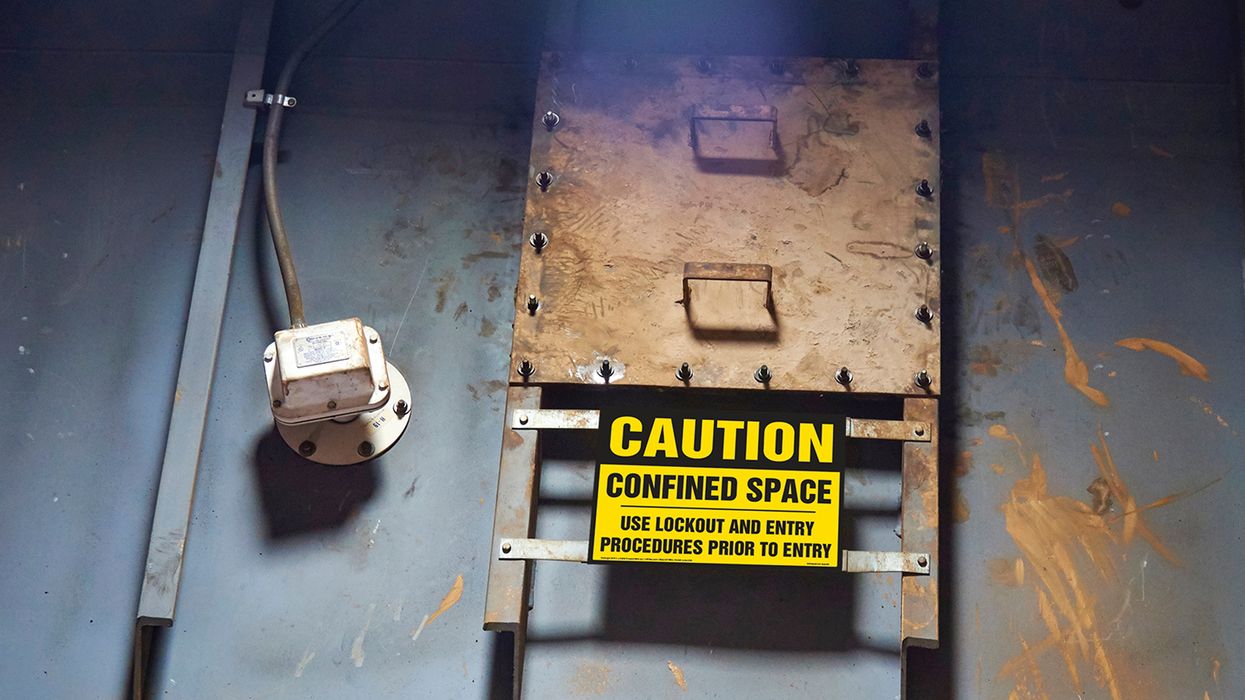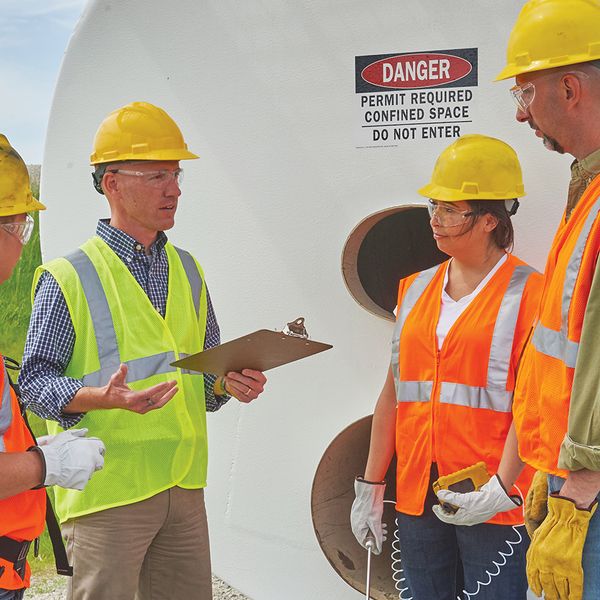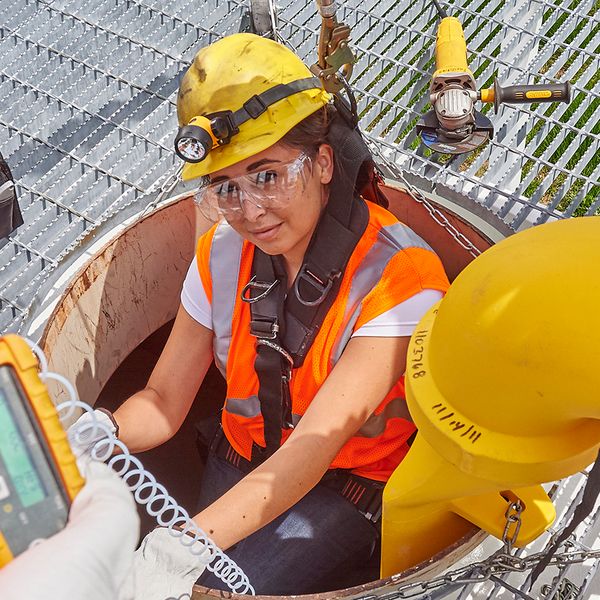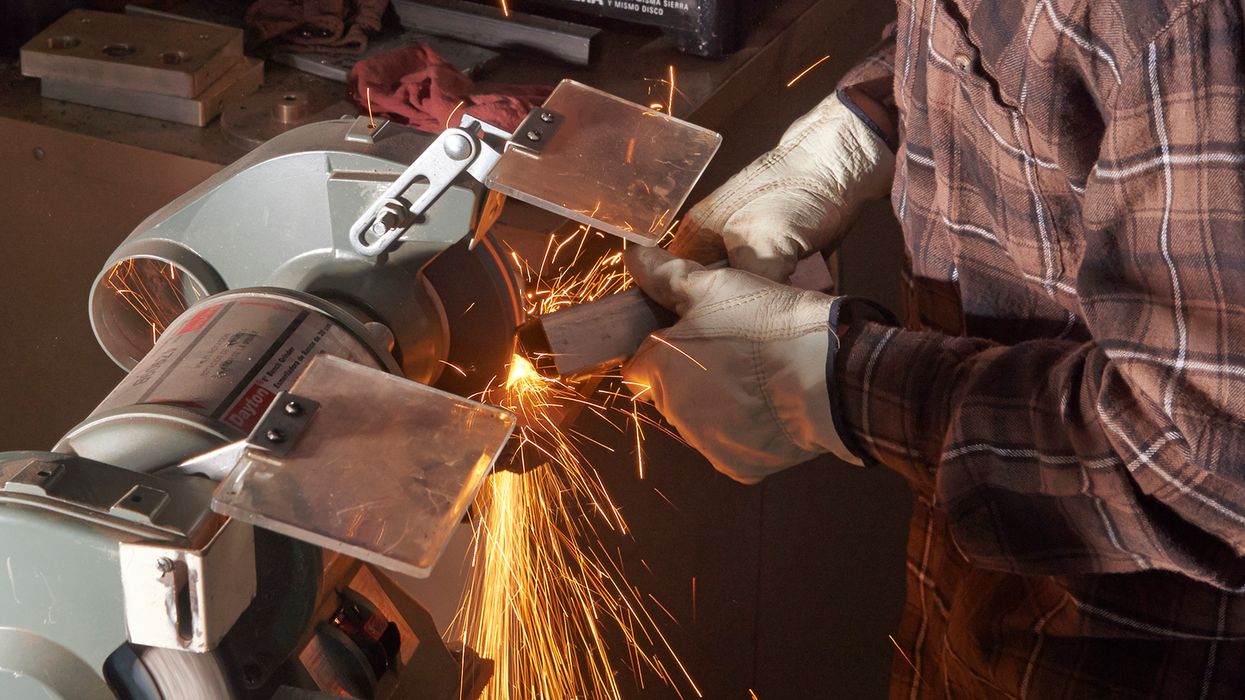Classifying unique spaces as permit-required (Or not)
Permit-required confined spaces (PRCSs) should be easy to identify, right? But what about unique spaces like water tanks, balers, attics, and crawl spaces? Clarifying whether a permit is required may not be as clear-cut as you thought, so let’s shed some light on identifying them.
What is a PRCS?
A permit-required confined space (PRCS), or simply “permit space,” is a specific type of confined space that has additional hazardous characteristics. To understand what a PRCS is, we first need to define what constitutes a confined space, which is an area that:
- Is large enough and so configured that an employee can bodily enter and perform assigned work; and
- Has limited or restricted means for entry or exit (for example, tanks, vessels, silos, storage bins, hoppers, vaults, and pits are spaces that may have limited means of entry); and
- Is not designed for continuous employee occupancy.
To be a PRCS, the space must also:
- Contain or have a potential to contain a hazardous atmosphere;
- Contain a material that has the potential for engulfing an entrant;
- Have an internal configuration such that an entrant could be trapped or asphyxiated by inwardly converging walls or by a floor which slopes downward to a smaller cross-section; or
- Contain any other recognized serious safety and health hazard. This may include electrical, water or steam, high pressure lines, toxic fumes, welded exit doors, and so forth.
Confusion can creep in when identifying unique configurations and other recognized serious hazards. Here a just a few examples with clarifications.
ATTICS
Most attics wouldn’t be considered a confined space because there isn’t limited or restricted means of entry or exit. For example, attics tend to have pull-down stairs with no impediments to limiting a person’s ability to enter or exit.
However, there are some circumstances where extreme heat or humidity in an attic could be considered a serious physical hazard, and the space may then be considered a permit-required confined space. While OSHA has not quantified how hot it must be to trigger this requirement, heat that is extreme enough to cause heat exhaustion (e.g., dizziness, headaches, severe sweating, cramps) may impede an entrant’s ability to exit the attic without assistance. In such scenarios, the attic would then require a confined space permit.
CRAWL SPACES, TUNNELS, AND PITS
Crawl spaces and tunnels don’t usually trigger confined space indicators because they typically have unrestricted means of entry or exit. However, in cases where someone can’t fully stand, their exit or entry is likely restricted and would then shift the space to being a permit-required space.
Elevator shafts and pits, whether open topped or enclosed, are often considered confined spaces because of their depth and limited or restricted means of egress. Where these become permit-required is when the distance from one exit/entry point to the other is extremely lengthy or the area contains a physical or health hazard such as exposed electrical wiring or the potential for airborne gases to accumulate.
TANKS
While some tanks are obviously permit-required, others aren’t so clearly defined. While chemical tanks have the potential for toxic vapors, a water tank may not. Water doesn't solely constitute a PRCS, however, the potential to introduce water into the tank while a person is working in the tank (even unintentionally) could create a drowning situation. Additionally, drains could create a suction hazard with the potential for worker injury and blocking egress access.
Mechanical hazards such as moving equipment or parts, energized components, or pressurized systems within a tank can also make it a PRCS. Examples of these include shafts, couplings, gears, mixers, rotors, and compressing devices.
BALERS
Balers are used to compact items such as cardboard and are designed so the discharge door is held closed by a locking mechanism. When these fail, workers can be trapped in the baler door or sustain injuries if attempting to clear jammed material from an operating machine. These physical hazards typically make this type of equipment PRCS.
What constitutes “entering a space?”
OSHA has said that if any part of an entrant’s body breaks the plane of the opening of a permit-required confined space (PRCS), entry is considered to have occurred and a permit is required. This rule applies regardless of whether there is an intent to fully enter the space or not. On the other hand, if a part of the body were placed in an opening through which the worker could not pass into the PRCS, then no permit is required.
How can you protect workers?
Employers can protect workers from confined space hazards by:
- Conducting a risk assessment to identify which workspaces meet OSHA’s definition of a PRCS;
- Identifying protective measures employees must take to prevent injury from recognized exposures to electrical hazards, engulfment potential, or hazardous environmental conditions such as heat and humidity;
- Establishing a rescue plan for PRCS; and
- Training employees to recognize confined spaces, when permits are required, and proper protocols for entry.
Keys to remember: Understanding unique space configurations and training workers how to differentiate between the hazards of confined spaces and those within permit-required spaces, is essential for preventing potential injuries or fatalities.



















































